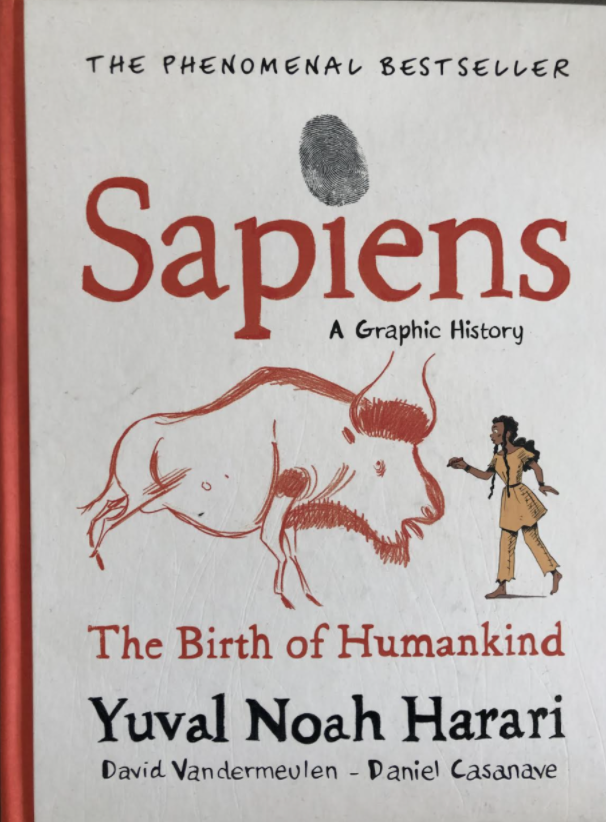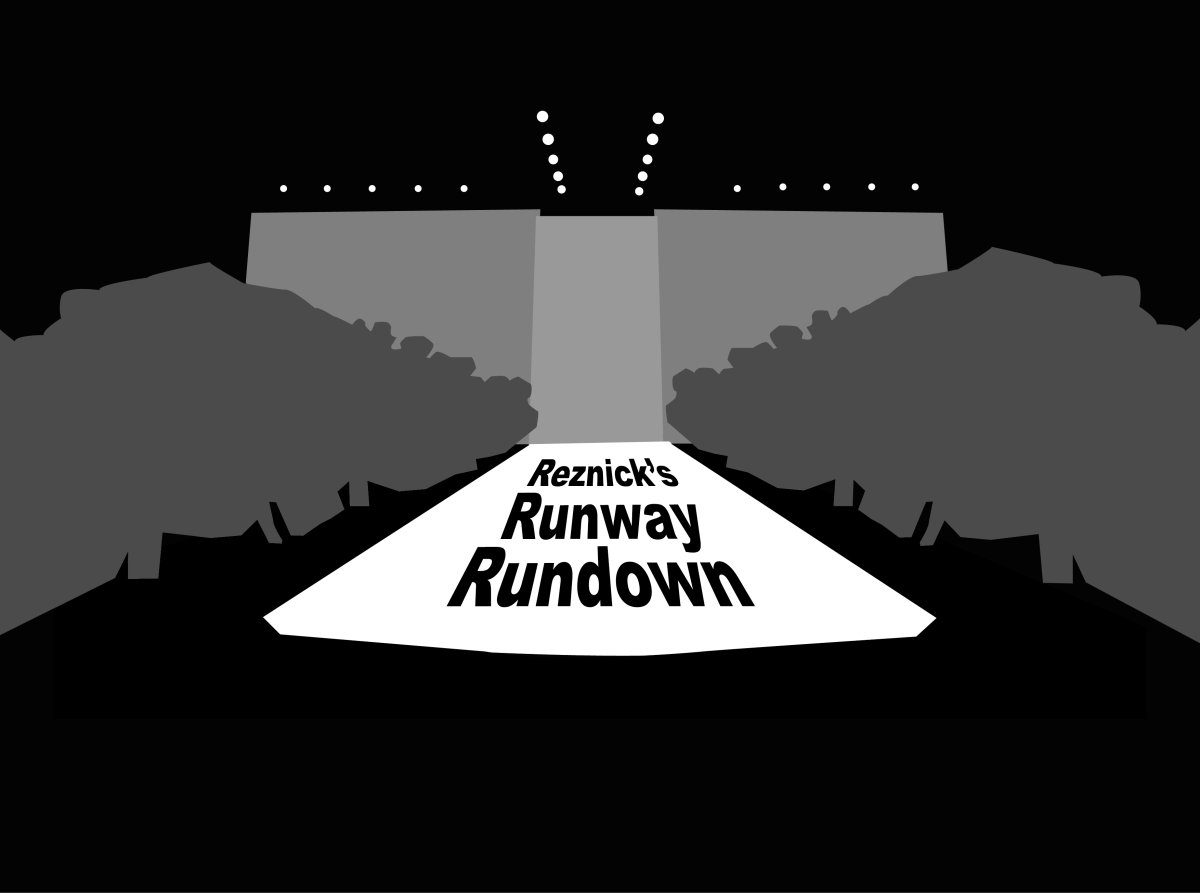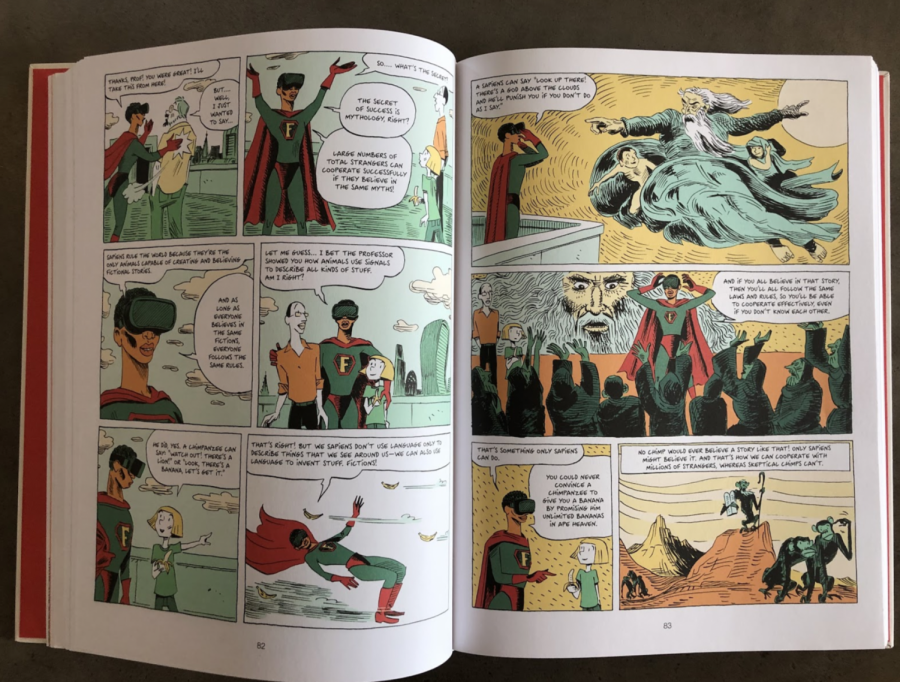“Sapiens: A brief History of Humankind” by Yuval Noah Harari retraces the history of humanity, and what made humans the world’s dominant species. For those apprehensive of a 512 page history book retracing the complex evolution of the human kind, you are in luck: a graphic novel adaptation has just been published. “Sapiens: A Graphic History” volume one: “The birth of Humankind” was released in November, with comic artist David Vandermeulen as co-writer and Daniel Casanave as illustrator.
First published in English in 2014, the original book brings an original and thought-provoking perspective to the classic theories of evolution. Using concepts from biology, history and economics, and written in terms digestible for both history professors and a layman, Hariri untangles a timeline starting three million years ago. In it, he explains how humans’ unique cognitive capabilities are ultimately what has given them the power to dominate the world.
While the graphic novel form may make the book seem as if it were intended for children, the witty dialogue and references to adult TV shows and cartoons make it both an easier read for a younger audience and a more illustrative version for adults.
“Sapiens” quickly became an international bestseller endorsed by influential world and business leaders such as Barack Obama, Mark Zuckerberg and Bill Gates. However, it was also criticized by The Guardian and other leading newspapers for making scientifically unfounded generalizations. While some of Hariri’s claims may just be theories that need further scientific proof, he brings a unique point of view, forcing the reader to look at humans and what has made us so powerful in a very different way.
The thought provoking idea that our civilization thrives and survives thanks to the belief in collective myths is at the center of the first volume of the graphic novel adaptation recently published. Featuring 256 pages of full-color illustrations and easy-to-understand text, the graphic novel brings a unique artistic view to this key concept discussed in the original book.
The argumentation is laid out as a reality TV show, with the author portrayed as a witty and humorous professor. He peeks through frames, bringing us along as he travels around the world to meet with scientists, various experts and professors demonstrating through visual and amusing examples his ideas and theories. While the graphic novel form may make the book seem as if it were intended for children, the witty dialogue and references to adult TV shows and cartoons make it both an easier read for a younger audience and a more illustrative version for adults.

The illustrations not only brighten the pages and help readers digest the text, but they also further amplify the adult, ironic and humorous tone of the novel’s bubble conversations. Daniel Casanave, the illustrator, cleverly mimics some modern iconic cartoon art work.
On the first trip, Professor Hariri travels to England along with his young niece Zoe, where they meet with Doctor Fiction, an expert in communication (who is also my favorite character). A Superman/Robin avatar, wearing green tights, a red cape and green goggles, Doctor Fiction explains Hariri’s most provoking thesis of the collective myth as the foundation of society.
As Professor Hariri asks “How did we end up founding cities with tens of thousands of inhabitants and empires ruling hundreds of millions?” Doctor Fiction flies in from the sky to explain to Zoe that the secret of civilization’s successes is mythology. If we all believe in the same things, he argues, we will be able to cooperate effectively even if we don’t know each other. A great example of this theory is religion, he continues.
This argument is demonstrated with a comedic perspective as Doctor Fiction tells Zoe “You could never convince a chimpanzee to give you a banana by promising him unlimited bananas in heaven.” No monkey would ever believe a story like that, he carries on to explain, only humans can, and that’s how they can cooperate with millions of strangers. The bubble conversation is illustrated with a chimp descending Mount Sinai with a pair of tablets in his arms. This book is a perfect combination of text and imagery combining humour and irony to bring further clarity.
As each chapter concluded with the phrase ‘up next in Sapiens !’ and new chapters began with titles such as ‘Sex, Lies and Cave Painters’, mocking famous films or TV shows, I found myself binge reading the 256 pages in a few hours, with time flying the same way it does when I am engrossed in a Netlfix series. The graphic illustrations, simple text and humorous tone help to make what could otherwise be a difficult slow read amusing and thought provoking.
The graphic and witty adaptation only further reinforces the irony that our entire civilization ultimately prospers on the premise of our common belief in fictions.
Critics of the original book may argue that the cartoon interpretation only reinforces the lack of scientific rigor they had found in Hariri’s theories. From my perspective, the graphic and witty adaptation only further reinforces the irony that our entire civilization ultimately prospers on the premise of our common belief in fictions. It is the perfect example of form enhancing content through making it more digestible as well as helping to further elucidate it.
Like an effective movie adaptation of a best selling novel, “Sapiens a Graphic History” ultimately brings to life in images and dialogues the compelling narrative of the original history book. The combination of humorous illustrations and quick-witted text make it an enjoyable and enlightening read for both the bibliophiles who have read the original book and those discovering it for the first time. A rare adaptation that does not disappoint.






